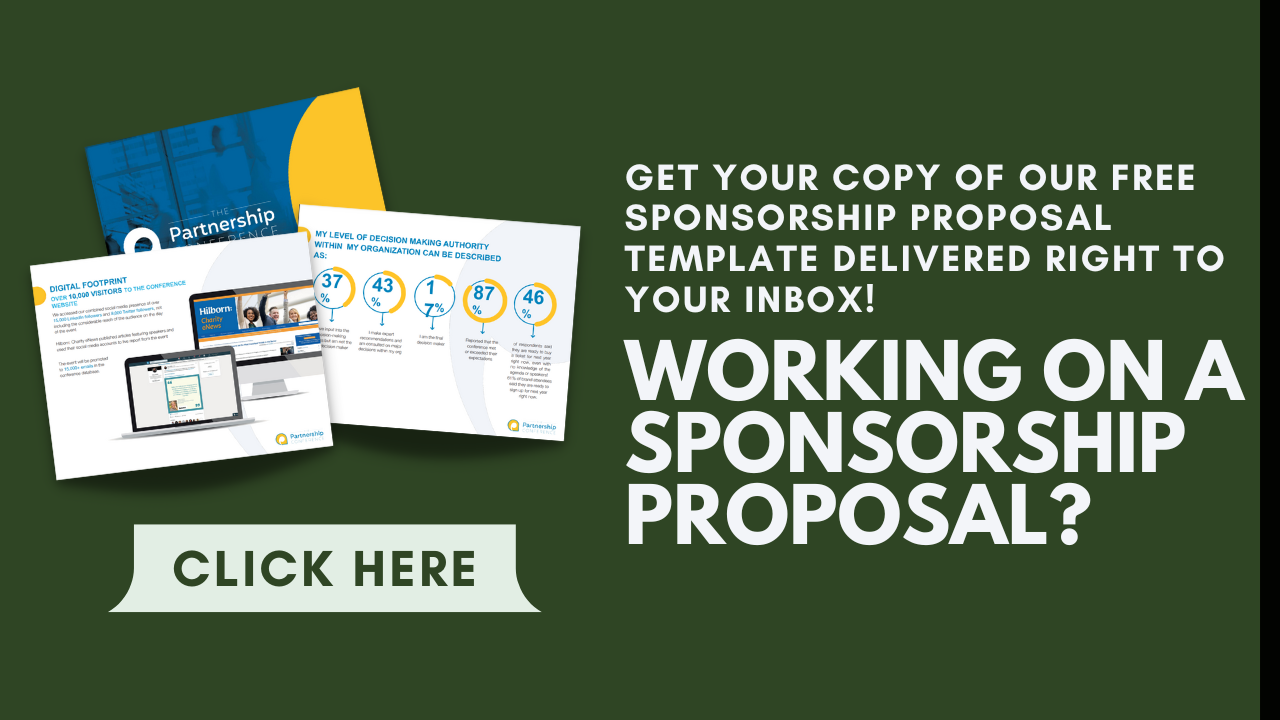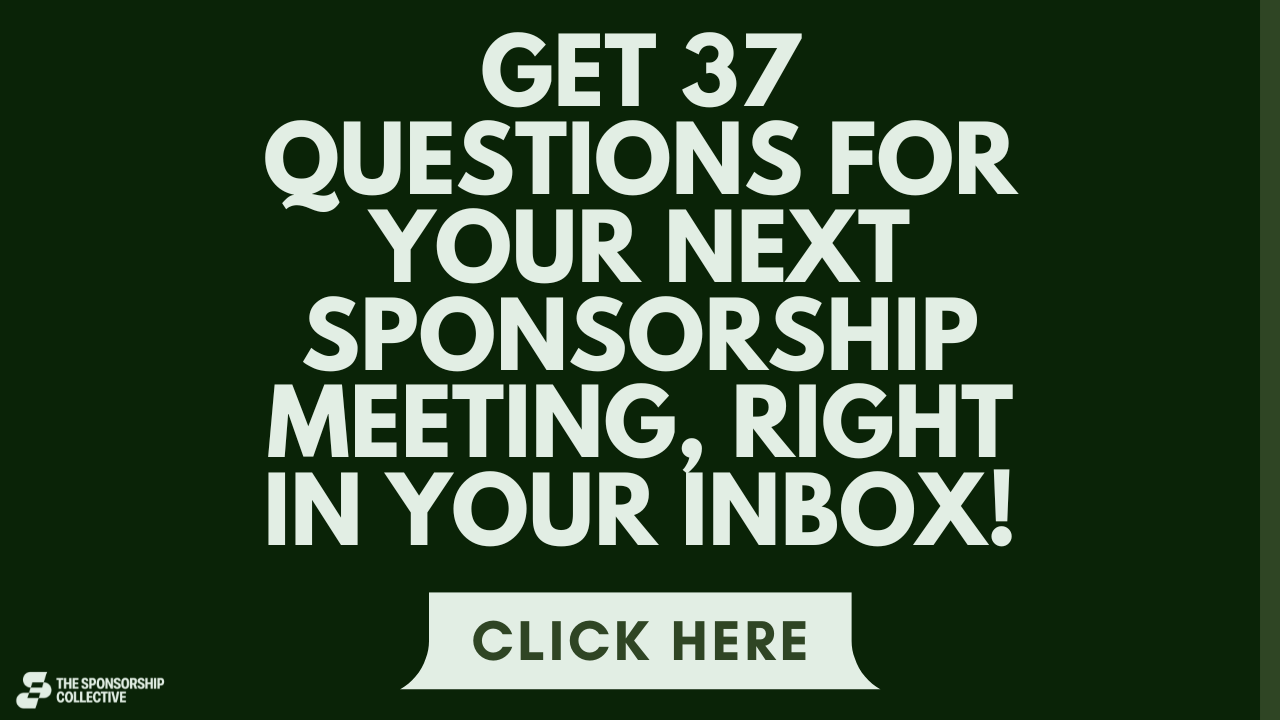Follow the leader is not just a children’s game, but a psychological phenomenon that occurs all the time. According to a Harvard Business Review article, what happens when you follow someone else’s lead is known as transference.
Leaders are viewed as put-together, intelligent people, so others think that walking in the leader’s footsteps is the right thing to do. Even more interesting is that this often happens involuntarily.
Knowing all that, I’m sure what I’m about to say is going to sound crazy. The next time you see your competitors chasing sponsorship, rather than follow what they’re doing, you have to go against the grain and do the opposite.
I know, I know, it’s insane. What can you possibly hope to achieve except for standing out? Well, I’m glad you asked, as that’s exactly what I want to discuss in today’s article.
Why You Shouldn’t Follow the Leader in Sponsorship Sales
You only have to look in the history books to pull out dozens of examples of bad leadership. From corrupt politicians to cult leaders, following the leader is not always the right move. That’s much the same case in sponsorship as well.
Believe it or not, once upon a time, I was as new to sponsorship just as you are now. I had no idea about the correct way to go about sponsorship sales, so I just did what I had heard worked for other people. You know, like putting your assets in a gold, silver, and bronze tiered sponsorship package.
Maybe that on its own wouldn’t have been so bad, but I didn’t stop there. Rather than email each target sponsor individually, I e-blasted everyone I wanted to pursue sponsorship with. I didn’t bother to schedule sales meetings at this point either. All my communications were done exclusively through email, mostly because it was a quicker and easier way to communicate.

Unsurprisingly, I heard crickets. Yes, that’s right, I sent out hundreds of emails to different target sponsors and got no replies for my efforts.
I didn’t want to give up though, so I tried a different (and equally wrong) approach. I would visit the websites of each target sponsor and fill out their online contact forms, hoping that would earn me a response.
I’m sure I don’t have to tell you this, but that approach didn’t work either. In fact, nothing I was doing was yielding me any results. I was pouring so much of my time, effort, and energy into my sponsorship program and I didn’t have anything to show for it.
Why were my efforts so fruitless? I was doing everything the same way that everybody else did. Around this time, I even went to a networking event and griped with my fellow attendees about how we all didn’t get responses from target sponsors.
That one networking event is when things began to click for me. I realized why my sponsorship program was failing. I was just blindly following the leader assuming they knew what they were doing when they didn’t.
The leader was wrong.
How to Do the Opposite of Everyone Else in Sponsorship
If I had kept up my same approach, I would have attended hundreds more of these networking events to complain about my sponsorship program and how it’s just not working. I figured if there were so many people in a room and none of us were getting this right that I had to do the opposite of what they were doing.
That’s just what I did, and years later, here I am helping others become sponsorship experts. I’m grateful for my eureka moment happening when it did. I hope this post can be your eureka moment before you spend months or even years funneling your time and money into the wrong avenues.
So how do you do the opposite of everyone in sponsorship? Here are my top tips.
Use Your Audience to Find Target Sponsors
How do you choose a sponsorship company to pursue? Do you just pick names out of a hat? Maybe you only focus on brand popularity, as you want star power for your event.
Well, I hate to break it to you, but those aren’t the right approaches. What I recommend instead is looking inward at your audience and seeing what they like. Before you can do that, you have to learn about your audience through audience surveys and other data, as your audience is usually the crown jewel of your assets.

Once you understand the buying behavior and brand preferences of your audience, you can then go to those brands your audience likes and discuss the idea of sponsorship. You won’t always get a yes by going this route, but it’s far better than choosing target sponsors with no rhyme or reason.
Ditch the Tiered Sponsorship Package
I’ve written several blog posts dedicated to tiered sponsorship levels and why you should avoid them. I linked you to one such post in the paragraphs above, and here’s another one.
I talk about this particular topic so much because it’s a huge stumbling block for many sponsorship seekers. They think they have to put their best assets in a gold package or no one will bite.
Some sponsorship seekers try to be inventive and add a fourth tier outside of gold, silver, and bronze, maybe platinum. Yet this is just perpetuating the wrongness of your sponsorship package layout.
If you have assets that the sponsor wants to buy, then it doesn’t matter nearly as much how the assets are presented. You also don’t have to force the sponsor into buying by segmenting all your best assets.
The only way to know what your target sponsor is interested in is through research. You have to talk to your sponsor and find out what kind of goals they’re trying to achieve. Then you can figure out which assets you can provide that will help the sponsor meet their goals. This often results in a customized sponsorship package in which the sponsor knows everything that’s on the menu.
Without the element of surprise, the target sponsor can select the high-value assets they want and you can get the funding you desire for your event.
Stop Cold-Calling/Emailing Target Sponsors
In my post about the top reasons people succeed in sponsorship, I mentioned that the most efficacious sponsorship seekers find a contact at the sponsorship company. That contact doesn’t have to be your best friend, your neighbor, or your third cousin twice removed. You just need someone that another person in your network knows.
Having this contact makes all the difference. The target sponsor will want to give you the time of day because you have someone in common.
Now, does this take a lot more work and effort than e-blasting 100 sponsors at the same time? Absolutely. You have to go one by one when contacting target sponsors, but let me tell you something, that’s the right way to pursue sponsorship anyway.
Pick up the Phone Once in a While
I know you’re a busy person. Some days, busy seems like an understatement, right? Writing emails takes less of your time, so that’s how you communicate.
Even if you use a very warm writing style, communicating only through email starts to feel a little sterile after a while. Go ahead and forge that human connection by calling your target sponsor from time to time. What you’ll usually find is that talking on the phone can be faster than ping-ponging emails back and forth all day.
Never Send Your Sponsorship Proposal in the First Email
Those email blasts you’re sending out don’t just query the target sponsor’s interest, but you include an attachment as well. That attachment is your sponsorship proposal, all formatted and ready to go.
This mistake is often the death knell of many sponsorship programs. Even if you have a contact at the sponsorship company, they still don’t want to see your proposal in the first email. That’s triply true if you’re cold-emailing your sponsors.
It’s just not the right time yet. The target sponsor hasn’t warmed up to you much, if at all, and so the last thing they want to do right now is give you money. You have to wait until way later into the process to send your sponsorship proposal.

By the time you reach that point, you and the target sponsor will have met up several times for meetings. They should always be the one to request the proposal. Sending it unsolicited is going to get your email redirected to the trash bin or spam folder.
Conclusion
Shortly after I learned the recipe for sponsorship success, so to speak, I attended another networking event. Did I tell everyone my secret? No! I kept it heavily guarded. Well, until now. I feel it’s important for sponsorship seekers to understand that following the leader is rarely the right approach.
If you’re interested in learning an even more systematic method of doing the opposite of everyone else, I highly recommend you check out my free training called How to Grow Your Sponsorship Program. You’ll learn which areas of your sponsorship program need your time the most and what sponsors look at when deciding which partners they’ll work with.
- About the Author
- Latest Posts
Chris Baylis is the Founder and Editor-in-Chief of The Sponsorship Collective.
After spending several years in the field as a sponsorship professional and consultant, Chris now spends his time working with clients to help them understand their audiences, build activations that sponsors want, apply market values to their assets and build strategies that drive sales.
Read More about Chris Baylis

